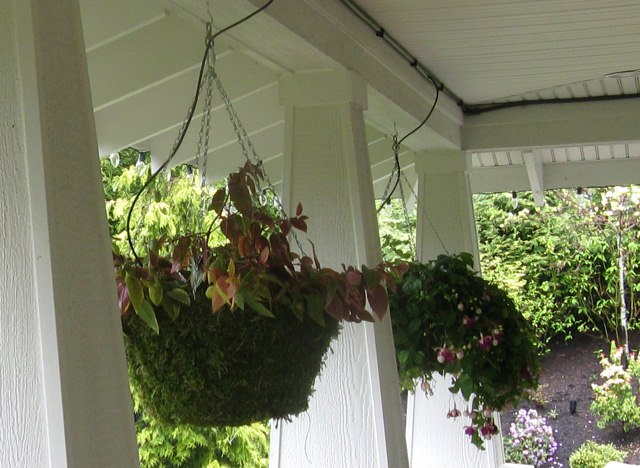Drip Feed Irrigation Systems — Automatic drip watering systems can give each garden plant or pot exactly the right amount of moisture for optimum growth as well as saving water and work.

Correct watering is probably the most important single factor in growing healthy ornamental plants and vegetables in your garden. Overwatering can cause just as much damage as under watering. Find out how an easily installed and relatively inexpensive automatic drip feed watering system can:
A number of manufacturers sell domestic drip feed irrigation systems, either as complete kits or individual components. Items are generally, but not always, interchangeable between different makes, so it’s best to check before buying loose parts.
A full working system consists of:
This is connected directly to the mains water supply to ensure the right pressure throughout the system. Most systems will work satisfactorily without one, but it is necessary to satisfy the requirements for watering during a hosepipe ban.
This allows you to control for how long and at what time of day watering takes place. This, too, is not essential – you can turn the water on and off manually – but it saves a lot of time, ensures your plants are watered if you’re away or forget, and again is legally required for watering during a hosepipe ban.
This is normally a 13mm diameter semi-rigid hose with the necessary connections and fittings to carry the water to the parts of the garden where it’s needed with minimum loss of pressure.
This is a narrow gauge flexible pipe of around 4-6mm diameter, with fittings which allow you to plug it into the connecting pipe wherever it’s needed, and lead water off to individual plants, pots or containers.
These are individual drippers which may be inserted at intervals along the supply pipe at each plant or pot station. Alternatively, you may choose to use just one dripper at the end of each individual length of the supply pipe. Drippers are normally calibrated to deliver a measured 2 or 4 litres of water per hour but may be adjustable.
Since the diameter of supply tube varies between manufacturers, drip heads may be incompatible. Check before buying.
These are meant to hold drippers clear of the soil and prevent clogging, but it’s just as easy and cheaper to use short lengths of garden wire.
Must Read:
Drip feed watering can be used anywhere in the garden, especially during hosepipe bans. However, it is ideal for:
Other types of irrigation may be more suitable for plants in densely planted beds, or plants with large rooting areas.
Once set up, a system like this needs little attention, and most timers are designed to run on one set of batteries for a full summer season.
It’s nevertheless best to check every week or two if possible, either visually or with a moisture meter, to ensure that the system is still working, that no feed lines or dripper heads are blocked and that all plants and containers are still getting all the water they need.
Also check and adjust as necessary when there is a major change in the weather, eg extended periods of heavy rain, hot sun or drying winds.
When plants become dormant in late autumn and winter, little or no watering will be needed.
Must Read:
The system described is permitted to be used for watering during any hosepipe ban, provided that it is fitted with a pressure valve and timer.
A drip feed irrigation system need not be dependent on mains water supply and may be connected to a freestanding water tank or even rainwater butts. Some manufacturers like Hozelock and Gardena supply kits specifically designed for alternative water supplies.